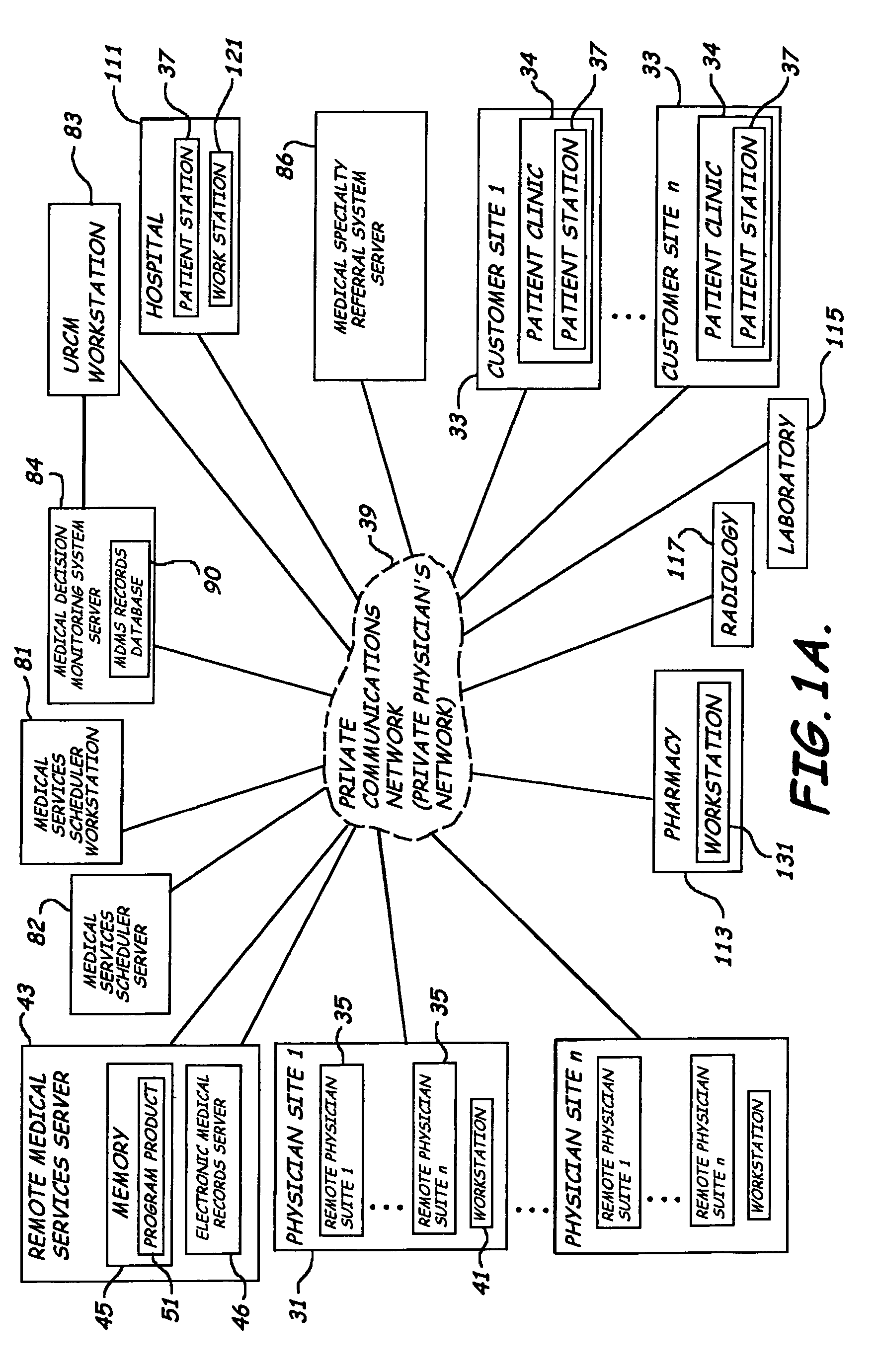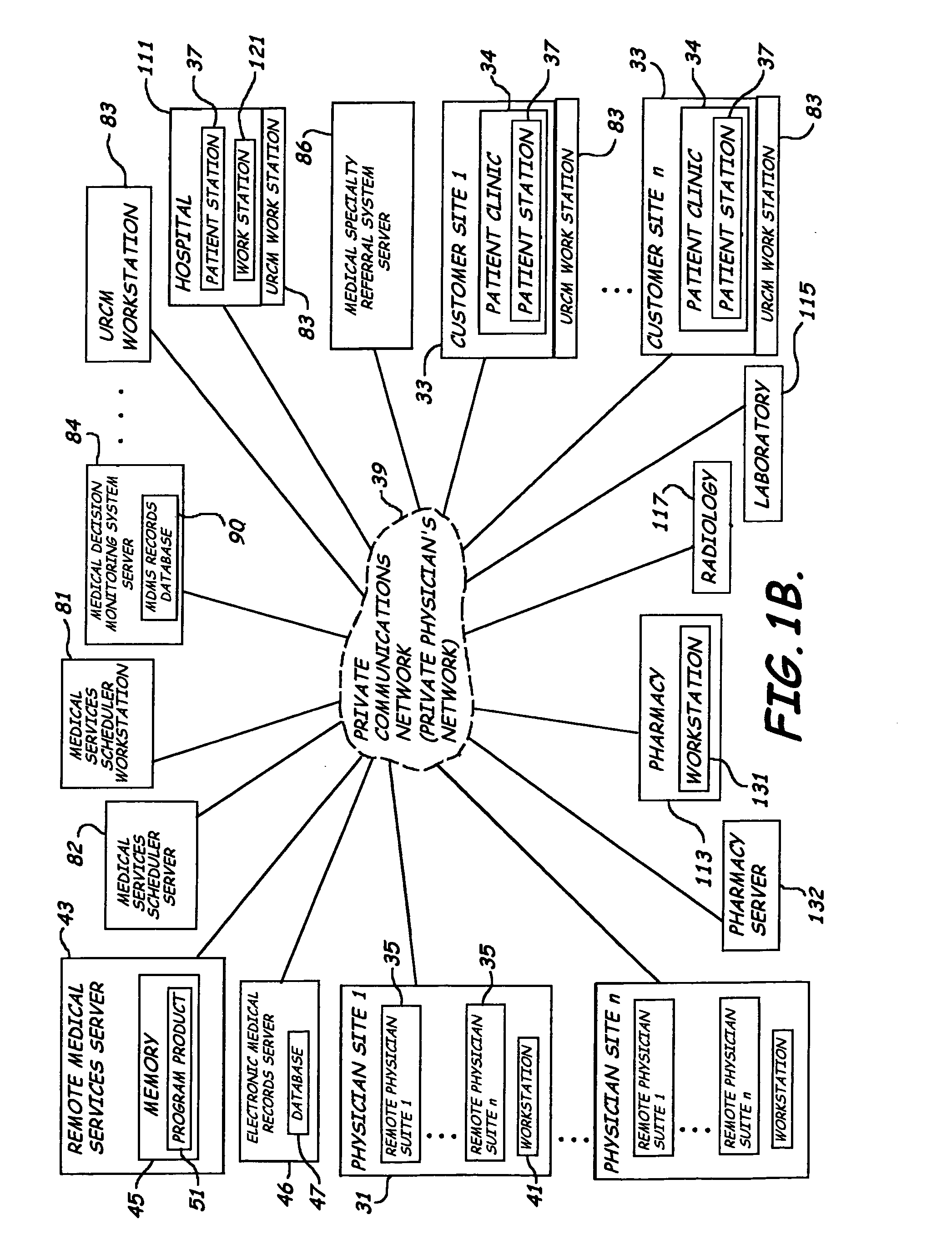Most of such facilities do not, however, have the internal resources to fully provide for all the branches of
patient care.
Further, smaller communities may be unable to afford a properly staffed medical facility or hospital, may not have enough of a
population to support various medical specialties typically serviced by specialist physicians, or may have both adequate funding and
population but nevertheless may have an inadequately staffed medical facilities due to physician recruiting difficulties.
Due to the advances in
modern medicine, the number of illnesses and injuries that can now be treated have significantly increased while the number of properly trained in educated physicians, especially specialist physicians, have not kept pace.
As a result, the difficulty of providing timely and cost efficient patient access to such medical professionals has become increasingly complicated, especially in the various non-medical facilities, institutions, and communities, described above, that are unable to support their own fully staffed hospital staffed with a sufficient number of physicians to provide adequate coverage for each medical
specialty.
Even through the use of outsourcing and the use of external contracts, generally there is still an insufficient
pool of specialist physicians.
Further, even when there is adequate physician resources, under
normal conditions, there is generally an insufficient
pool of substitute physicians to provide coverage where a physician is sick or otherwise unable to service his or her appointment schedule.
Also, even when a substitute physician or specialist physician is available, a significant amount of such physician's time is wasted in transporting the physicians between their “home” location and the location of the patient.
Thus, patients often either need to be transported great distances in order to obtain such services, maximizing the available time of the physician, or the physician is transported to the patients, the result being a fewer number of patients are provided service than would otherwise be, corresponding to the time
delay in transporting the physician to the patients.
Such systems, however, are difficult to use, provide poor
imaging quality, and either do not provide for real-time feedback between the patient and physician or provide insufficient feedback such that it can not be considered a sufficient substitute for an in-person scheduled routine visit.
Further, because telemedicine in its current form does not properly integrate the use of electronic medical records,
pharmacy formularies, or medical protocols that reduce the need for discretion on the part of a
patient care provider, they provide for an ineffective and non-standardized utilization of the physician resources.
Still further, because such systems tend to be implemented either ad hoc, provide block-time physician availability, or are merely established to monitor a patient's condition without real-time patient-physician interactivity, they do not lend themselves to provide cost efficient utilization and prioritization of a remotely positioned physician's available time.
Stated another way, they do not provide a physician centered
system for delivering healthcare, and thus, ineffectively utilize limited physician resources; the result being difficulty in a patient obtaining desired medical services and increased costs in obtaining such service, when available.
For example, many providers have a stated policy prohibiting transfer of information related to an individual's
medical record by
facsimile transmission because they do not deem this to be a secure transmittal method.
Although generally management of chronic diseases is enhanced by maintaining a proper medication regiment, little data is available to perform
statistical analysis to determine to what extent deviations from a proper medication regiment effect management of such chronic diseases.
Even with the advent of electronic medical records, data is often created and placed sporadically in different records situated at remote locations, making such data difficult to access for analysis.
Inmates historically have filed lawsuits against the correctional facilities claiming that they have been denied proper
medical care.
 Login to View More
Login to View More  Login to View More
Login to View More 


